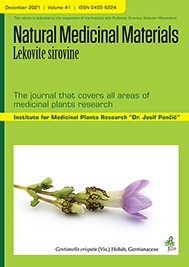Institute for Medicinal Plants Research “Dr. Josif Pančić” , Belgrade , Serbia
Institute for Medicinal Plants Research “Dr. Josif Pančić” , Belgrade , Serbia
The usage of hawthorn preparations has a long history in the traditional treatment of heart failure, which is considered as the inability of a weakened heart to supply peripheral tissues with the required amount of oxygen and nutrients. The leaf, flower, and fruit of the hawthorn, due to the presence of bioactive compounds such as flavonoids, procyanidins, organic acids, amines, etc., are showing a wide range of the effects on the cardiovascular system. The leaf and flower have a positive monograph in Commission E, as well as the EMA monograph, but only for traditional use. Numerous clinical studies have been conducted to evaluate the beneficial effects of dry hawthorn extracts on heart diseases. There are a large number of phytopreparations in various galenic forms on the market trade. According to the recent guidelines, usage of hawthorn preparations as a monotherapy in heart failure is not recommended. Instead, it should be used as an adjunct therapy.
This is an open access article distributed under the Creative Commons Attribution License which permits unrestricted use, distribution, and reproduction in any medium, provided the original work is properly cited.

The statements, opinions and data contained in the journal are solely those of the individual authors and contributors and not of the publisher and the editor(s). We stay neutral with regard to jurisdictional claims in published maps and institutional affiliations.